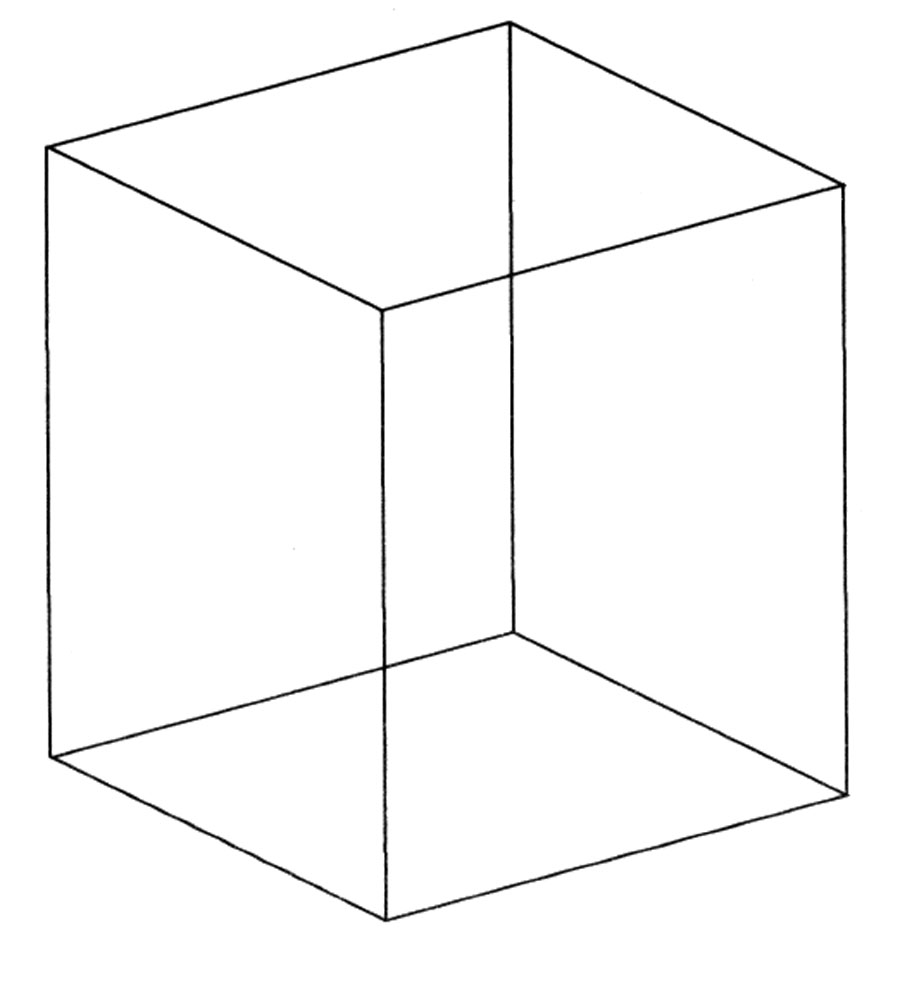Saltatory processes
If a starting state and ending state of a system are both stable equilibria, but the transition state between them is unstable, then the system will look as if it is jumping from one state to the next. This is called saltation from the Latin saltus (leap).
An example of saltation is found in the earliest published visual illusion, the Necker Cube. It is bistable meaning it can be interpreted in two equally stable ways. The perceptual system jumps back and forth between the two interpretations of the cube.

The Necker Cube is called "bistable" because there are two stable interpretations that alternate.
You are probably familiar with this example, but if not, just gaze it steadily for a minute or two and you will see the effect. The neural networks that interpret the cube one way become fatigued, then the neural circuits involved in the other interpretation take over, until they become fatigued.
The system oscillates between the two states. The oscillations are a jump because there is no halfway point between the two interpretations of the cube. The perceptual systems is pulled strongly toward one interpretation then the other.
When a system is growing or developing, it may go through periods of sudden change such as growth spurts. This is a form of saltatory process called punctuated equilibrium.
A system showing punctuated equilibrium appears to rest or stay the same for a while, then it changes relatively quickly into a new, distinct state. The word punctuated means periodic or appearing at intervals. This pattern occurs when there is a stable state followed by a quick transition to another stable state.
The phrase punctuated equilibrium was coined by Harvard evolutionary biologist Stephen J. Gould. He was describing how some species maintained a stable form in the fossil record for millions of years, then evolved into a new form relatively suddenly, perhaps tens of thousands of years.
The trigger for change might be a new set of predators or an extinction event. A population bottleneck (when the number of members of a species is diminished) can yield a small set of survivors with distinctive characteristics who take over a population (Gould, 1983).
Piaget, the French developmental psychologist, identified a pattern of punctuated equilibrium in the cognitive development of children. He called it equilibration.
The transition from one stable state to another was illustrated by Piaget's famous conservation experiments. These demonstrated how young children would move suddenly from an immature way of thinking to a more advanced outlook.
Piaget's best-known demonstration is what he called conservation of liquid quantity. A three year old child witnesses an adult pour exactly one measuring cup of water into two short, fat glasses. The water levels are the same, and the child agrees the amount in each glass is equal.
Now the adult pours one of the short glasses into a tall, thin glass and sets it next to the remaining short, fat glass. The child is asked again if the amount of water in each glass is the same or different.
Very young children will reliably say the tall, thin glass has more in it. "More" to them means "higher water level" and they have no concept of an amount of liquid that can stay the same in different shapes.
When the child gets a bit older, a new way of thinking emerges. Piaget called the new talent "conservation of liquid quantity" because the child now has a concept of something that says the same (is conserved) when comparing the two situations: short fat glass and tall thin glass. That "something" is what we adults call liquid quantity.
Now the child finds it obvious that a short wide glass can have the same amount of water as a tall thin glass. "You didn't add anything or take anything away," the child might explain, or simply, "It just changed its shape; it is the same amount."
The change from one outlook (pre-
In many systems, a jump from one level to another is slow. In that case, the process is not saltatory; it is the familiar S curve of growth. Vocabulary growth in humans is like that.
Vocabulary grows steadily from early childhood to old age, although the most rapid gains are in early childhood. The diagram of human vocabulary acquisition throughout life looks like an S curve followed by a slowly rising line.
Some critics say that punctuated equilibrium in evolution is not really a saltatory growth process, because the transition takes so long. It may look like an S curve up close, while looking like a sudden jump from a distance.
That may be true. Gould's main point seems to be that periods of no change can be followed by periods of rapid change, then another long period of no change. Because his field was evolution, "rapid" change could take tends of thousands of years.
The underlying pattern is the same as for genuinely saltatory processes. The intermediate stages are unstable, compared to the before and after states.
The principle of saltation or punctuated equilibrium: A system moving between two stable states will appear to jump if the intermediate states are unstable.
---------------------
Reference:
Gould, S. J. (1983) "Evolution as Fact and Theory." In: Hen's Teeth and Horse's Toes. New York: Norton.
Write to Dr. Dewey at psywww@gmail.com.
Search Psych Web including the General Systems Toolkit and the online textbook Psychology: An Introduction below.
Copyright © 2017 Russ Dewey
